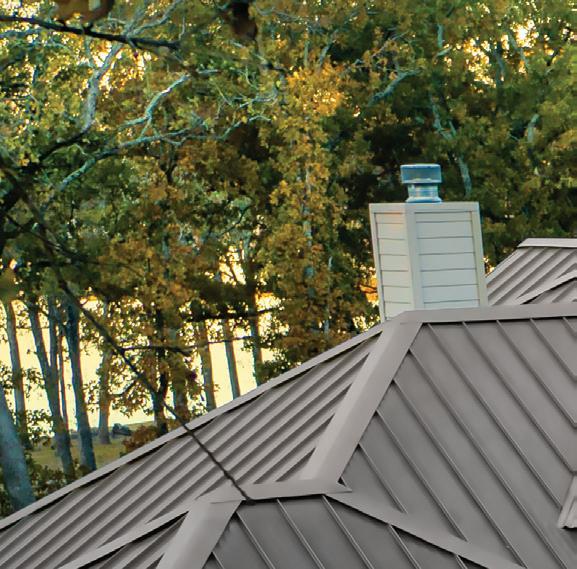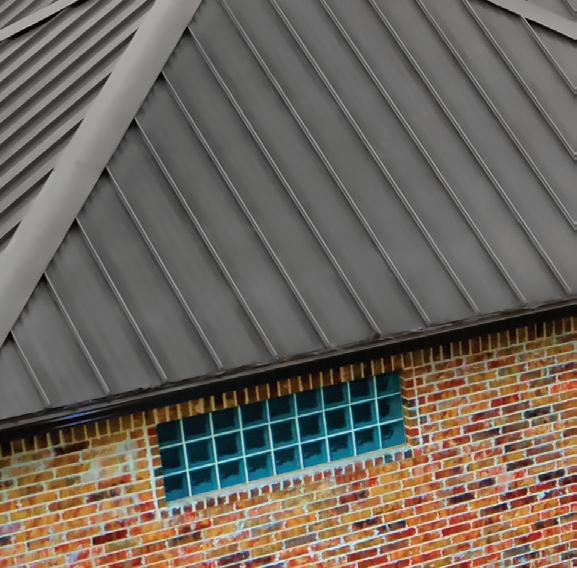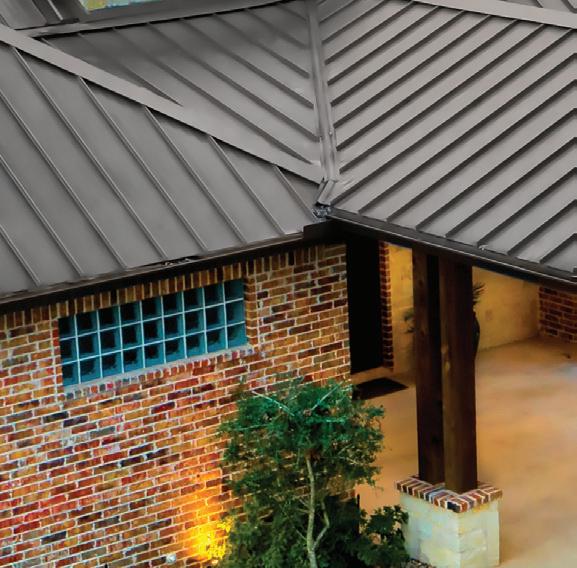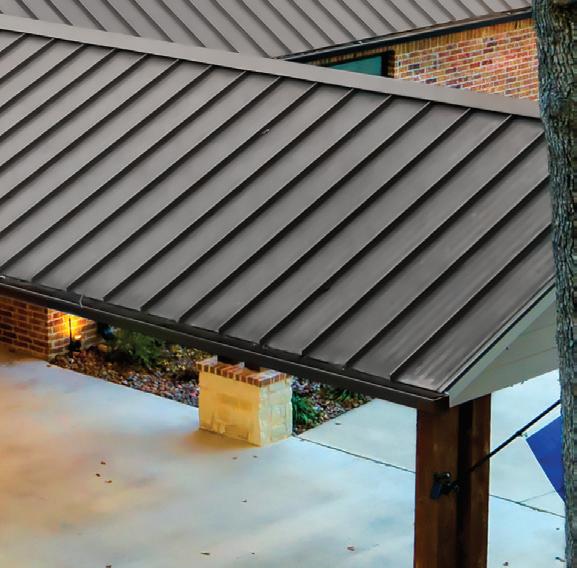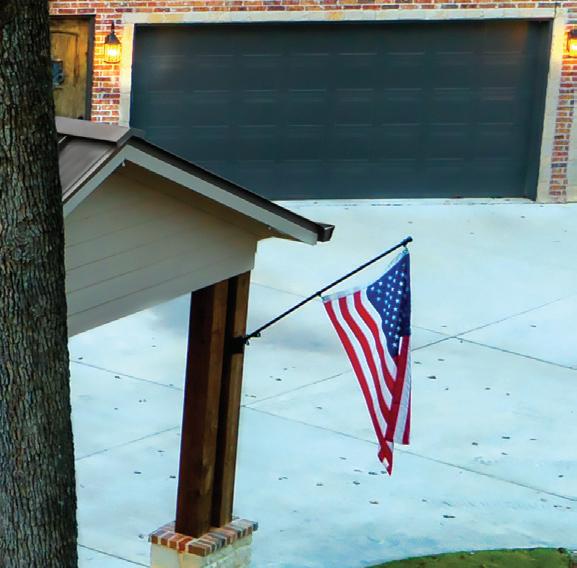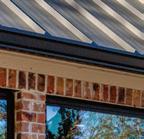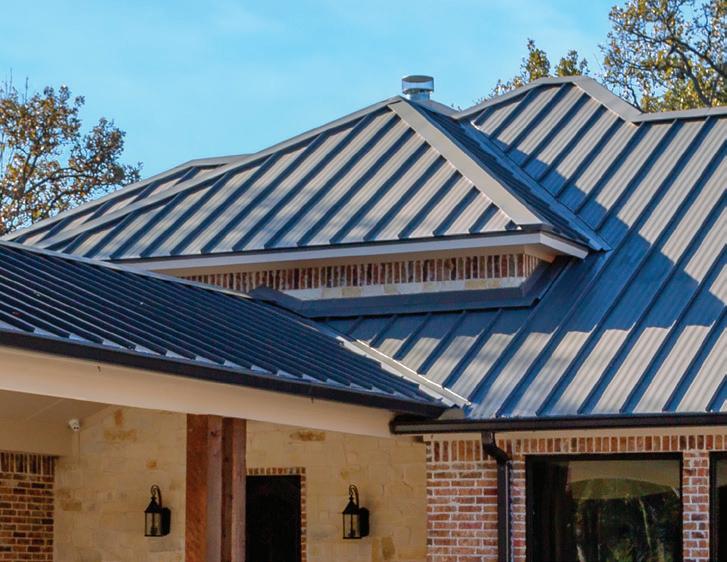

Tallgrass Farm: A Passion for Agriculture




Louisiana Country



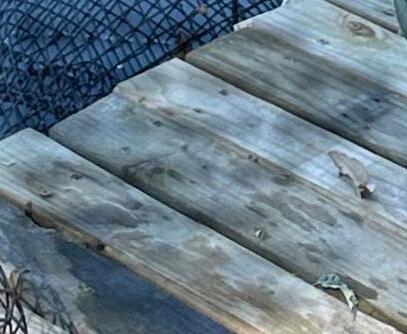





Burt Tietje uses crawfish tours at his farm to teach about agriculture and diversification.
PHOTO COURTESY OF TALLGRASS FARM





Working Together to Restore Power
This spring, Louisiana—along with most southeastern states—weathered a series of severe storms. Association of Louisiana Electric Cooperatives, demonstrating its resilience, was able to activate our mutual aid network on a smaller scale to assist our cooperatives with restoration efforts caused by these isolated storms in the southeast. As we enter hurricane season, we stand prepared, fortified by our mutual aid efforts.
Co-ops, united by a spirit of cooperation and community, prepare for major outages and disasters through mutual aid—a collaborative approach to emergency planning. The mutual aid model allows electric co-ops to support each other during times of need. This approach permits co-ops to “borrow” restoration workers from other co-ops, thereby increasing the workforce response to areas impacted by a major outage. It’s essentially about neighbors helping neighbors, even when those neighbors are fellow co-ops located hundreds of miles away.
Electric co-ops operate according to Seven Cooperative Principles. Principles six and seven, Cooperation among
Cooperatives and Concern for the Community, are directly connected to the mutual aid network.
Electric co-ops were formed to provide safe, affordable, reliable electricity to our member-consumers. Being able to restore power efficiently following storms is part of our DNA. During major outages, a variety of equipment is needed to complete repairs, including bucket trucks and other specialized vehicles, utility poles, transformers and wires. Skilled lineworkers, tree trimmers, damage assessors and other key personnel are also often shared among co-ops. These experts provide critical skills and manpower to speed up the restoration process.
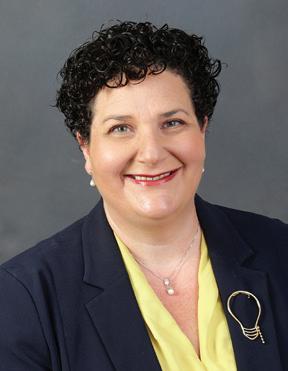
the necessary personnel and equipment, the key ingredients of the mutual aid recipe. These efforts require effective logistics management and experts who fully understand resource allocation and have the know-how to respond under pressure, providing a strong support system for our mutual aid efforts.
ALEC is a nonprofit organization representing the electric distribution cooperatives operating in Louisiana. The Louisiana Electric Cooperatives serve roughly 1 million citizens in 50 parishes. Our mutual aid network, consisting of 26 states working closely with their statewide associations, provides an abundant supply of personnel and equipment when needed most for storm recovery.
Disaster response and mutual aid, crucial aspects of our operations, are managed by electric co-ops and our statewide organizations. These organizations play a vital role in coordination between states, ensuring
Association of Louisiana Electric Cooperatives Inc.
Staff
CEO Addie Armato
SAFETY COORDINATOR Ricky Melancon
COMMUNICATIONS AND DIGITAL MARKETING
SPECIALIST Conley Bourgeois
ADMINISTRATIVE ASSISTANT Rhianna Garon
CREDIT UNION
Tanya Carroll, manager
Jody Overhultz, representative
Board of Directors
President Dennis Glass
Vice President Michael Heinen
Secretary/Treasurer Roger Dale DeHart
Buxton
Marcotte Lane Davidson
Daniel Berthelot Richard “Dickie” Sitman
Michael Heinen Byron Hardee
Trevor Benoit Roger Dale DeHart
Joe Jarrell Dennis Glass



the source of Louisiana’s food traditions Page 12
Addie Armato





906 N. Lake Arthur Ave.
P.O. Box 1229
Jennings, LA 70546
337-824-4330 • 337-824-8936 (fax)
Branch office: 815 Hwy. 27, Bell City, LA 70630
337-598-5700
www.jdec.org
STAFF
Michael J. Heinen | CEO
Anya Killmer | Executive Assistant/ Benefits/HR
Eric Gautreaux | Chief Operating Officer
Tara Guinn | Chief Financial Officer
Skyler Hebert | Office Manager
Ben Hetzel | Director of Safety/ Member Services
Brennon LaBouve | Engineering Manager/ Substation & Metering
Heath Lemieux | Superintendent
Kain Miller | Superintendent, Jennings
Jonathan Nunez | Superintendent, Hackett
Wendell Thibodeaux | Purchasing Manager/ Warehouse
BOARD OF DIRECTORS
Joseph L. Tupper | President
Thomas Precht III | First Vice President
John Berken | Secretary/Treasurer
James Doxey
Byron Hardee
Wilson Dean Landry
Reggie Murphy
Kevin Sonnier
Martin Zaunbrecher
Volume 41, Issue 4
Louisiana Country (USPS 473-180) is published bimonthly by the Association of Louisiana Electric Co-ops Inc., 10725 Airline Hwy., Baton Rouge, LA 70816, in partnership with Pioneer Utility Resources.
Annual subscriptions: Members $2.30. Nonmembers $5.
Postmaster: Send form 3579 to 10725 Airline Hwy., Baton Rouge, LA 70816.
Periodicals postage paid at Baton Rouge, Louisiana 70821, and additional mailing offices.
We Are Prepared For Summer Storms
Summer is here, school is out and families are gearing up for a few months of fun and relaxation. While summer brings much fun in the sun, it can also bring the occasional severe storm. In a power outage, you can trust that Jeff Davis Electric Cooperative is ready to respond.
The major cause of most power outages comes from damage to power lines due to falling trees and branches. We work yearround—through right-of-way clearing—to ensure power lines in our service territory stand little risk of being damaged by trees, branches or other types of vegetation.

Despite our best efforts, transmission stations, substations and power lines can be damaged during major storms. When this happens, we prioritize safely restoring power to as many members as possible in the shortest time.
We start by mobilizing our line crews and other critical staff. Every phone line available is used to take your outage report calls. The big problems are handled first—such as damage to transmission lines, which serve thousands of people. These problems must be corrected before we can focus on other areas where more localized damage may have occurred.
JDEC’s line crews inspect substations to determine if the problem starts there or if there could be an issue down the line. If the root of the problem is at the substation, power can be restored to hundreds or thousands of members.
Next, line crews check the service lines delivering power to neighborhoods and communities. Line crews repair the damaged lines, restoring power to hundreds of people. If you continue to experience an outage, there may be damage to a tap line outside of your home or business. Make sure you notify JDEC so crews can inspect these lines.
We will do our best to avoid power outages, but sometimes Mother Nature has other plans. Be sure to check www.jdec.org or like us on Facebook for the latest updates during a power outage.


Michael Heinen
Cleco Cajun LLC

Plan for Summer Safety
The sun is out, and so are we. Summer is underway—and your festivities may include barbecues, pools and more, especially with this southern heat. Here are a few electrical safety tips to keep in mind this summer.
Keep electrical items away from water. Whether hanging lights outside or using your grill, keeping all electrical items away from water is important. Ensure you keep them at least 6 feet away— whether a pool, sauna, sprinkler, spa or hot tub.
Don’t climb trees or fly kites near power lines. As the family heads outside to play, ensure everyone knows to stay away from overhead power lines. It’s important that no one climbs trees or flies kites near power lines.
If you get a kite caught in a power line, let go immediately and never try to untangle it, as you could be at risk of electric shock. Avoid lighting fireworks near power lines. Are you planning on lighting fireworks this Independence Day? Keep an eye on where you are. Never light fireworks near power lines.
If you encounter a downed power line, never touch any part of it. Call us immediately at 337-824-4330, so repairs can be made and no one gets hurt.
Invest in GFCI outlets. Ground-fault circuit interrupter outlets can save a life and should be installed anywhere there’s a chance water and electricity will meet.
The GFCI is a fast-acting circuit breaker designed to shut off electric power in the event of contact with water and prevent electrocution. Consider installing GFCI outlets for your electric grill, string lights, radio or anything electricity-powered used outside or near water.
Use outdoor extension cords.When buying extension cords, make sure they’re rated for your needs. Extension cords intended for indoor use only should never be used outside. Outdoor extension cords are made to handle elements such as water and heat.
However you choose to mark the season, Jeff Davis Electric Cooperative wishes you a safe and happy summer.
Keep children safe by teaching electrical safety.
ADOBE STOCK PHOTO BY SEANLOCKEPHOTOGRAPHY
Taste of Louisiana Cookout and Rally

ABOVE: Association of Louisiana Electric Cooperatives staff gather before a busy day.
RIGHT: From left are Dane Hocott, Washington-St. Tammany Electric Cooperative; Randy Pierce, DEMCO; Addie Armato, ALEC; Joe Jarrell, WSTE; Mike Heinen, Jeff Davis Electric Cooperative; Louisiana’s Department of Agriculture and Forestry Commissioner Mike Strain; Matt Peters, South Louisiana Electric Cooperative Association; Johnny Bruhl, WSTE; and Kevin Turner, Beauregard Electric Cooperative Inc.
BELOW: From left, Randy Pierce, DEMCO; Dane Hocott, WSTE; Mike Heinen, JDEC; Matt Peters, SLECA; and Addie Armato, ALEC, meet with Gov. Jeff Landry’s office to discuss cooperative issues.
Association of Louisiana Electric Cooperatives and members hosted the Taste of Louisiana Cookout for elected officials. The afternoon was spent at the Capitol, meeting with legislators and ended with some Louisiana home cooking.
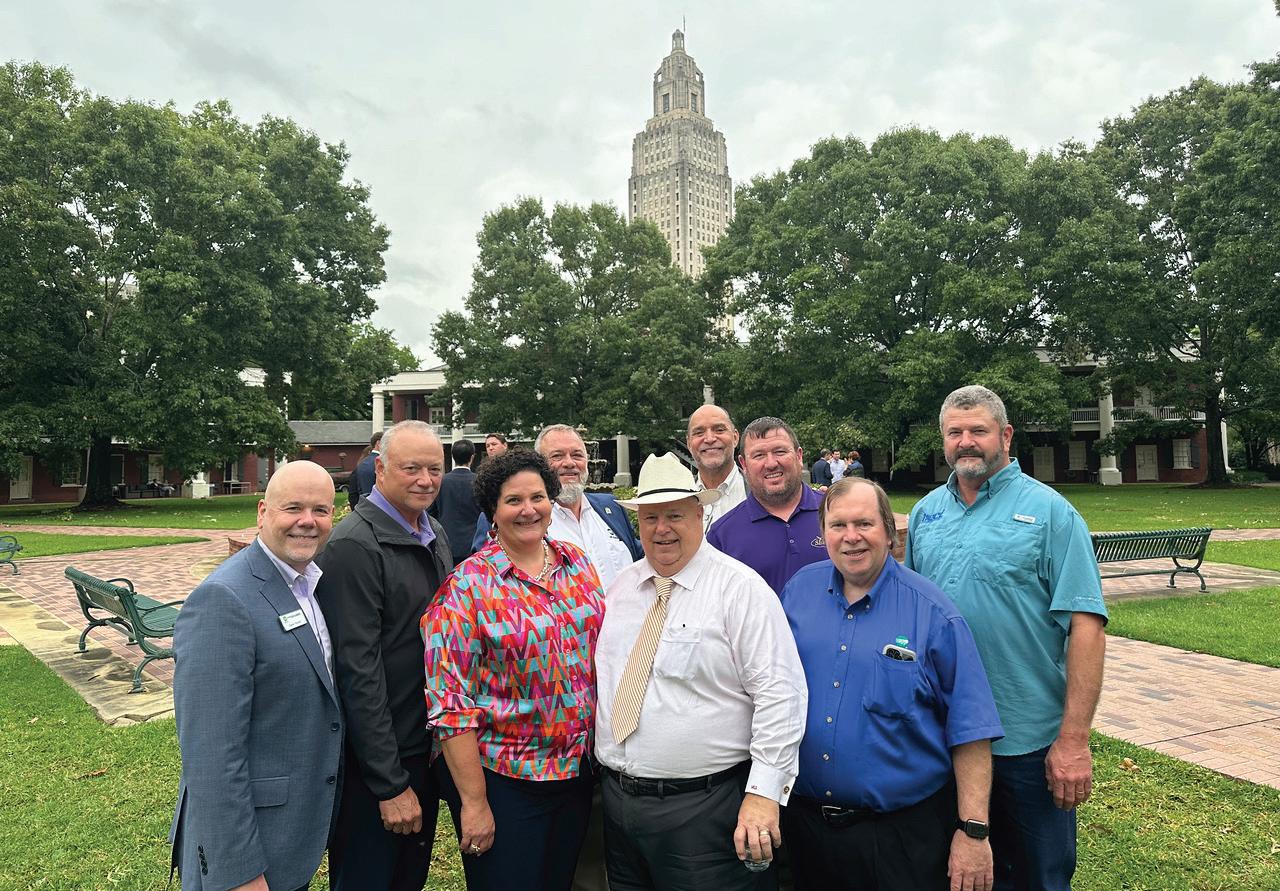
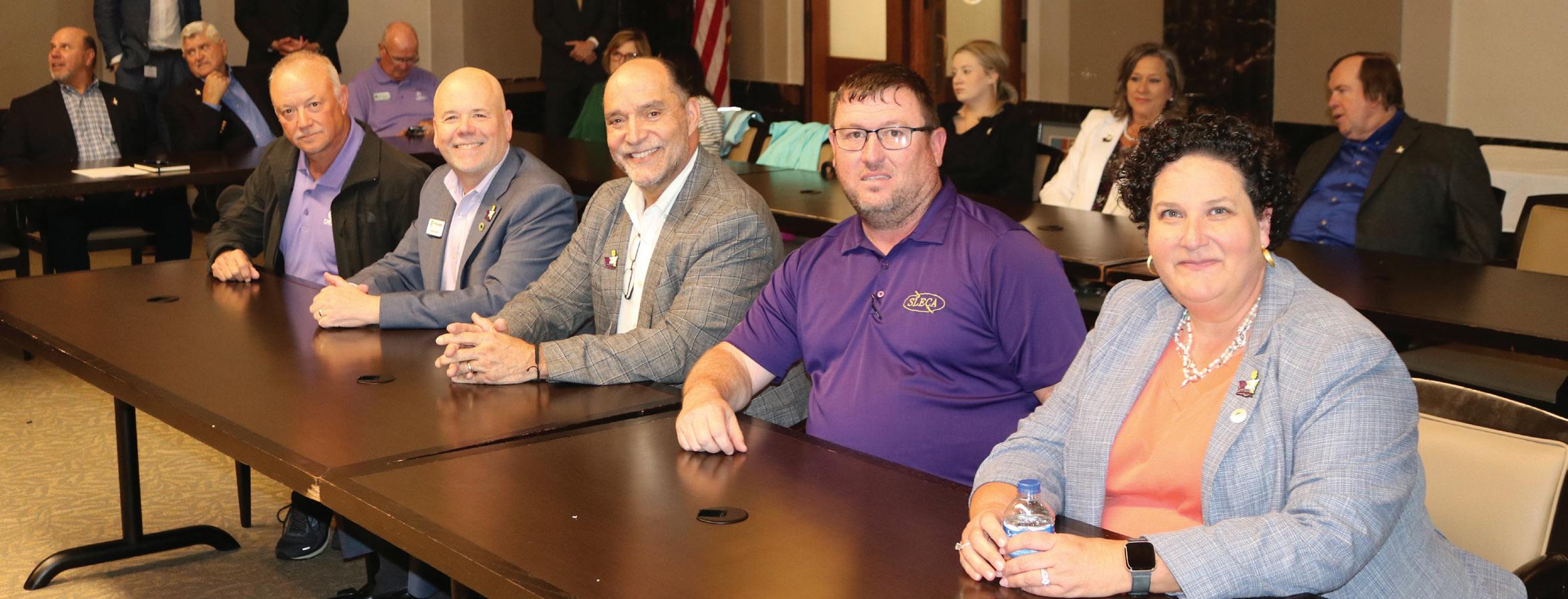




Legislative Conference
Louisiana electric cooperative leaders met in April with the state’s congressional representatives in Washington, D.C., to discuss topics important to the member-consumers they serve. The visit coincided with the National Rural Electric Cooperative Association’s Legislative Conference, which welcomes co-op grassroots advocates from across the country to the nation’s capital each year.
CLOCKWISE FROM TOP LEFT: From left, Mike Heinen, Jeff Davis Electric Cooperative; Austin Haynes, Panola-Harrison Electric Cooperative; Addie Armato, Association of Louisiana Electric Cooperatives; Matt Peters, South Louisiana Electric Cooperative Association; Dane Hocott, Washington-St. Tammany Electric Cooperative; and Randy Pierce, DEMCO, are pictured on Speaker Mike Johnson’s balcony in Washington, D.C. ALEC staff members, from left, Matthew Cross, Addie Armato, Conley Bourgeois and Charlie Corona attend NRECA’s Legislative Conference. Cooperative directors and key personnel meet in Rep. Steve Scalise’s office on Capitol Hill. Cooperative directors and key personnel converse in Speaker Johnson’s office.
WATER SAFETY
FILL-IN-THE-BLANK
Summer means fun in the sun and spending time in the water to cool off. But remember, electricity and water never mix! Read the safety tips below and fill in the blanks with the correct choice from the word bank.
Psst! Check your work in the answer key.
1. When possible, use __________ operated or rechargeable devices when you’re near water sources like a swimming pool.
2. If you hear __________ while swimming, go inside until storms have passed.
3. Never bring __________ devices near a swimming pool or other body of water. Devices should be kept at least 10 feet away from water sources.
4. All outdoor electrical outlets should be covered and kept __________.
5. Never handle electrical devices if you are __________ from swimming or other water activities.
WORD BANK
A World of



Inspira Chef Amanda Cusey finds home in Louisiana
By Cheré Coen
When her pan-seared red drum over tomato polenta with a crawfish cream sauce earned Amanda Cusey the 2022 Louisiana Seafood Queen title, many people likely thought the Lake Charles chef was a Bayou State native. However, Amanda’s life and career have taken her around the world, landing her in Louisiana only because her parents found work in the Lake Charles area.
TIPS
from
“Butter makes everything better.”
“Don’t be afraid to try something new, and don’t be afraid to fail. And don’t be afraid to be weird.”


“Don’t overcook seafood. Seafood can be very delicate. If undercooked, you can always bring it back up.”

Originally from Flagstaff, Arizona, Amanda was living in North Carolina when her parents, both Chicago natives, encouraged her to join them in England, where they lived at the time. She accepted their offer and attended Cordon Bleu training at Tante Marie Culinary Academy in Surrey.
Amanda later worked in English gastropubs, an American diner in Ireland, and under chefs Kristan Burness and Brendan Ward at Fiorentina in Dublin, where she ultimately earned the head chef position. She worked briefly with Michelin star chef Oliver Dunne at his Italian-inspired pop-up restaurant, Eatily, in Dublin’s city center.





When Amanda’s parents grew tired of cold English winters, they began planning their return to the States. An engineering job brought them to Lake Charles, and Amanda followed. At first, the Southwest Louisiana town took some getting used to, but the hospitality Acadiana is known for quickly won her over.





















































Chef Amanda Cusey
A range of influences inspires Chef Amanda Cusey. PHOTO COURTESY OF AMANDA CUSEY
tion
“It’s quite grown on me,” Amanda says.
She first developed traditional Italian dishes inspired by her years in Europe to mix with Louisiana influences at The Villa in downtown Lake Charles. Now, she helms the kitchen at The Terrace restaurant at Lake Charles’ Family Entertainment Center, melding her European training with local dishes, flavors and ingredients.
The casual restaurant allows Amanda to bring her elevated cuisine to the masses. Dishes include shrimp and grits, fried blue oyster mushrooms with house-made garlic aioli, flatbreads, and fried shrimp coated in Bayou Satsuma Rum and toasted coconut.
In addition to her seafood title, Amanda was also awarded the title of Best Chef in Lagniappe magazine’s Best of SWLA awards, which was voted on by readers. She is the second woman to earn this recognition and the first Lake Charles chef.
She also headed to Charlotte, North Carolina, with chef Lyle Broussard of L’auberge Casino Resort of Lake Charles in 2023 to be paired with North Carolina chefs in a restaurant takeover experience.
The accolades have been “surreal, a really cool experience,” Amanda says.
Seeing Lake Charles’ culinary scene grow during the past eight years has also been rewarding.
“It’s been cool to watch,” she says. “The city’s definitely got a whole lot going on.”



















Chef Amanda Cusey’s
Louisiana Lump Crab Cakes
½ cup red peppers, diced
½ cup shallots, finely diced
1 pound Louisiana lump crabmeat, cleaned 1-2 lemons, depending on size, zested and juiced
¼ cup parsley, chopped
2 tablespoons garlic, freshly minced
2 teaspoons Cajun seasoning
1 cup panko breadcrumbs
¼ pound butter, melted
Salt and pepper, to taste
2 tablespoons oil
DIRECTIONS
Saute the peppers and shallots until just tender. Add to a mixing bowl and combine with the rest of the ingredients. Adjust seasoning as needed. Cover and refrigerate for about an hour. Remove from fridge and form cakes to your desired size. Heat the oil and pan sear each side of the cakes until golden brown. If you made large cakes, you may need to pop them in the oven to heat them completely through.


























































































Farm


Experience the source of Louisiana’s food traditions












By Cheré Coen











Life












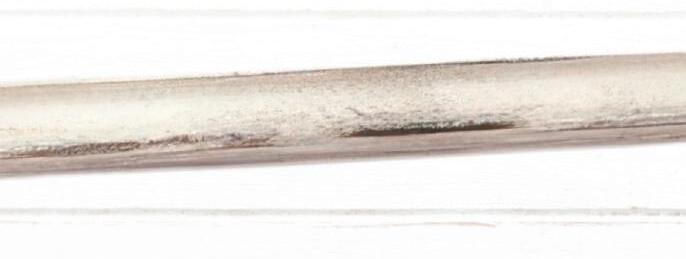




Louisiana is rich in culinary traditions, but how often do you consider where some of the tastiest ingredients originated? It’s even less common for people to experience these rich agricultural traditions firsthand. Fortunately, there are many opportunities throughout the state for folks to delve deeper into our food sources.






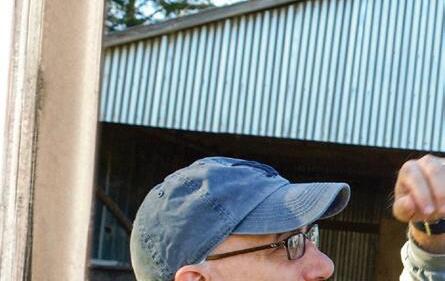












In the growing segment of the travel industry known as agritourism, participating businesses offer visitors a chance to immerse themselves in the agrarian way of life—whether milling rice, trapping crawfish or making hot sauces. From charming family-owned farms that offer accommodations to you-pick farms, destinations across Louisiana invite travelers to experience the rhythm of rural life, savor farm-fresh produce and engage in hands-on activities that celebrate the region’s agricultural traditions.
Bonne Terre Farm, Breaux Bridge





Breaux Bridge is a short drive from Lafayette, but Bonne Terre Farm feels like another world. This tranquil 10-acre working farm offers two quaint residences to choose from for an overnight stay. Guests can lounge in accommodations stocked with locally made amenities such as soap, fresh eggs, condiments and artwork. Owner Jennifer Gray is a Louisiana ambassador who loves sharing the state’s cultural offerings, and she often takes her guests on guided walking tours of the farm.


Jennifer loves her animal friends, and it shows. Visitors who stay at Bonne Terre don’t have to tour the farm, but Jennifer is happy to introduce them to her turkeys, horse, cow, geese and other friendly








TOP: Accommodations are offered on Jennifer Gray's working farm near Breaux Bridge. BOTTOM: A horse and other farm animals are part of Bonne Terre Farm near Breaux Bridge. PHOTOS BY CHERÉ COEN




















critters. On a scheduled tour, she expresses her appreciation of animals and the environment, believing immersion in a natural setting might be just the cure for many of modern life’s ills.







“It is a beautiful thing,” she says. “Animal therapy is a true science, and people benefit from it.”
Bonne Terre Farm, French for “good earth,” is for adults only. For more information, visit bonneterrelouisiana.com.


Other farm stays: Splendor Farms in Bush offers guest accommodations along with horseback trail riding, riding lessons and a petting farm. For more information, visit splendorfarms.com.
Blueberries



SonLight Farms in Bogalusa lets visitors pick their own blueberries or, if you’re feeling less hands-on, you can buy the fruit pre-picked and packaged. The family-owned and operated farm grows blueberries without chemicals. Be sure to call ahead,
information, call 985-241-0910 or visit the farm’s Facebook page.
Other berry-picking farms: Landry-Poche Farms in Springfield offers field trips for students and parents in the spring and an annual Family Fun Day. For more information, visit landrypochefarms.weebly.com.
Crawfish






Bachman Blueberries in Bush supplies a bucket, and you pick the berries. The season ends midsummer. Be sure to wear closedtoe shoes and bring water, bug spray and sunscreen. Visit the Bachman's Facebook page for updates.


Just north of Kaplan, Barry Toups takes visitors and residents out to his crawfish ponds, where he explains the business of raising Louisiana’s favorite crustacean. After the tour, visitors can enjoy their caught bounty boiled and served.
Barry is the proprietor of the circa-1903 Crawfish Haven/Mrs. Rose’s Bed and Breakfast, which offers three guest rooms. His tours put visitors in boats puttering through his ponds to retrieve what will be their supper. He fits six people in a boat at a time and pulls up 50 to 100 traps. Afterward, he boils the crawfish and serves up 5 pounds per person.


“We explain all about the life of the crawfish,” Barry says. “It’s very educational. The whole process is two to three hours, depending on how many questions they have.”






























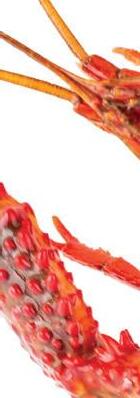
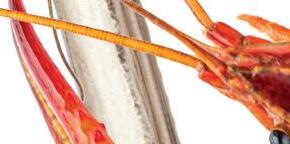






Several crawfish farmers offer agritours of their ponds.
PHOTO BY CHERÉ COEN





Barry’s crawfish excursions run December 1 through midMay or June 1, depending on that year’s crop. This year was more sparse than usual due to last summer’s drought. He speaks French, so many of his clients hail from across the Atlantic.






Barry’s tours have become so popular, he’s been on many television shows and in The New York Times Magazine. For more information, visit www.crawfishhaven.net.
Other crawfish tours: Jeff Davis Parish Tourism offers crawfish tours that take visitors from the boat to the processing plants. For more information and to book a tour, visit jeffdavis.org/tourism.









Team Voodoo Crawfish Tour is offered near Breaux Bridge. For information, visit www.crawfishtours.com.
Tabasco


The same pepper sauce recipe used by Edmund McIlhenny back in the mid-1800s is still used today at Tabasco’s factory on Avery Island outside of New Iberia. Visitors to the factory get to watch the blend of Tabasco peppers, salt mined from Avery Island and high-quality distilled vinegar aged in white oak barrels create one of the world’s most recognizable brands.



transmission. Attendees see much of the mill’s original equipment, view a slide presentation of Acadian history and browse the Konriko Co. Store that sells cookbooks, crafts, Cajun music and local food products, including Konriko rice fresh off the mill.













Tours are offered on the hour between 10 a.m. and 3 p.m., Mondays through Saturdays. Learn more at www.conradrice.com.

“It’s remarkably interesting for a short tour,” says New Iberia author Lynn Shurr, who brings visiting guests there. “There is also a good movie beforehand, free samples of coffee and food in the store and the best assortment of souvenirs in the entire town.”
Visitors also learn about Tabasco history and artifacts, view the pepper-growing process, get a look at the aging process in the mash warehouse and sniff from the vats where the magic happens. The factory compound also includes a restaurant and gift shop.
For information on the self-guided tours, visit www.tabasco.com.



Sunflowers
Rice
New Iberia is home to America’s oldest operating rice mill, and a tour shows visitors how rice milling came about.
Conrad Rice Mill was built in 1912 and is an example of the factory’s use of a turn-of-the-century belt-driven power





There’s a stretch of northwest Louisiana where sunflowers grow tall and wide. Folks in this region honor this bright, sunny flower every June with the annual Sunflower Trail and Festival in Gilliam, but visitors can enjoy the bright yellow blooms throughout the summer by driving the Sunflower Trail.
This scenic drive along Route 3049 and Sentell Road, south of Belcher, features a sunflower maze, wildflower fields, zinnia blossoms and historic stops, including the Veterans Memorial in Belcher, Crossroad Museum in Gilliam, Northrose Plantation in Dixie and more. Sunflowers along the trail are in full bloom and are expected to last through July.



Louisiana’s Sunflower Trail is along Route 3049. PHOTO COURTESY OF SHREVEPORT BOSSIER CONVENTION AND TOURIST BUREAU







Farmers Markets
ALEXANDRIA
Alexandria Farmers Market


NEW ORLEANS
Crescent City Farmers Market







3-6 p.m. Tuesdays, 2727 Jackson St.
LAKE CHARLES
Charlestown Farmers Market
8 a.m.-noon Saturdays, 1001 Ryan St.
Cash & Carry Farmers Market
4-6 p.m. Tuesdays, 801 Enterprise Blvd.
SHREVEPORT


Shreveport Farmers Market
7:30 a.m.-12:30 p.m. Saturdays, through Aug. 24, Festival Plaza, 101 Crockett St.
St. Francisville Farmers Market
8 a.m.-noon Saturdays, barn at 9961 Wilcox St.


New Orleans markets are held weekly at City Park, Uptown Square and Mid-City. Details are online at www.crescentcityfarmersmarket.org.
BATON ROUGE
Red Stick Farmers Market


Year-round markets are Thursdays: 8 a.m.-noon, Pennington Biomedical Center, 6400 Perkins Road; Saturdays: 8 a.m.-noon, North Fifth and Main streets, downtown Baton Rouge. Seasonal markets are 3-6 p.m. Tuesdays at the East Baton Rouge Parish Library, 7711 Goodwood Blvd; and 9 a.m.noon Wednesdays at the Exxon Mobile YMCA, 7717 Howell Blvd.





Natchitoches Farmers Market




8 a.m.-noon Saturdays, through July 27, 100 Rue Beauport
Houma’s Market at the Marina
8 a.m.-noon, first Saturday of the month, downtown Houma Marina
LAFAYETTE



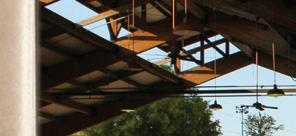

Lafayette Farmers & Artisans Market
8 a.m.-noon Saturdays, Moncus Park























August










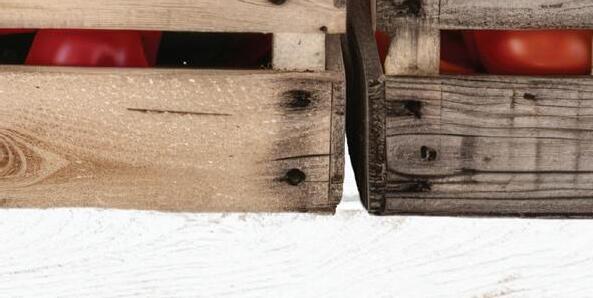









Shreveport offers a farmers market on Saturdays through
24. PHOTO BY CHERÉ COEN
ADOBE STOCK IMAGES BY MAKSIM, MASKARAD, H. OZMEN, DAVID KREUZBERG
Unlock Comfort and Savings
Weatherizing your home provides energy savings and comfort yearround, especially during summer months when your air conditioner is working overtime.
A home with insufficient insulation and air leaks wastes more than 20% of the energy used to heat or cool the home, according to energystar.gov. Fortunately, most weatherization projects are DIY and can be completed in a day.
The simplest and most cost-effective weatherization strategies include air sealing around windows and exterior doors.
If you have older windows, odds are you have air escaping through cracks and gaps around the frame. If you can see daylight around the frame or if the windows rattle easily, you likely have air leaks. Also check for small cracks around the frame that may not be visible with sunlight.
If you suspect you have leaky windows and plan to apply new caulk, be sure to remove the old caulk and clean the area before application. Caulking materials vary in strength and properties, but you’ll likely need a half-cartridge per window.
Silicone caulk is a popular choice and can also be used to seal joints between bathroom and kitchen fixtures.
Another effective but simple weatherization project is installing weatherstripping around exterior doors. The most common types of
weatherstripping options are V-channel, felt and foam tape. Choose the best for your home by considering temperature fluctuations and weather exposure. Most homeowners opt for felt or foam tape; both are easy to install but need to be replaced every couple of years, depending on wear and tear. Weatherstripping should be installed around the top and sides of the door.
If you see daylight around the bottom of an exterior door, consider installing a door sweep in addition to weatherstripping.
Weatherstripping can also be installed around windows.
Another way to improve comfort in your home is with insulation. While this is a more costly project and requires a professional’s help, it’s an effective way to decrease heat flow.
Older homes may need additional insulation to replace older materials or meet newer efficiency standards. Contact a qualified installation specialist if you suspect insulation levels are inadequate.
The best way to identify air leaks in your home is a blower door test. A blower door test helps determine how airtight your home is and identify air leaks.
In addition to saving energy, air sealing can help avoid moisture control issues, improve indoor air quality and extend the life of your heating and cooling system. Weatherize your home to unlock yearround comfort and savings on monthly energy costs. n


Congressional Visit
U.S. Rep. Clay Higgins, center, visits Jeff Davis Electric Cooperative and CEO Mike Heinen, left, with interest in the new 230-kilovolt transmission project.

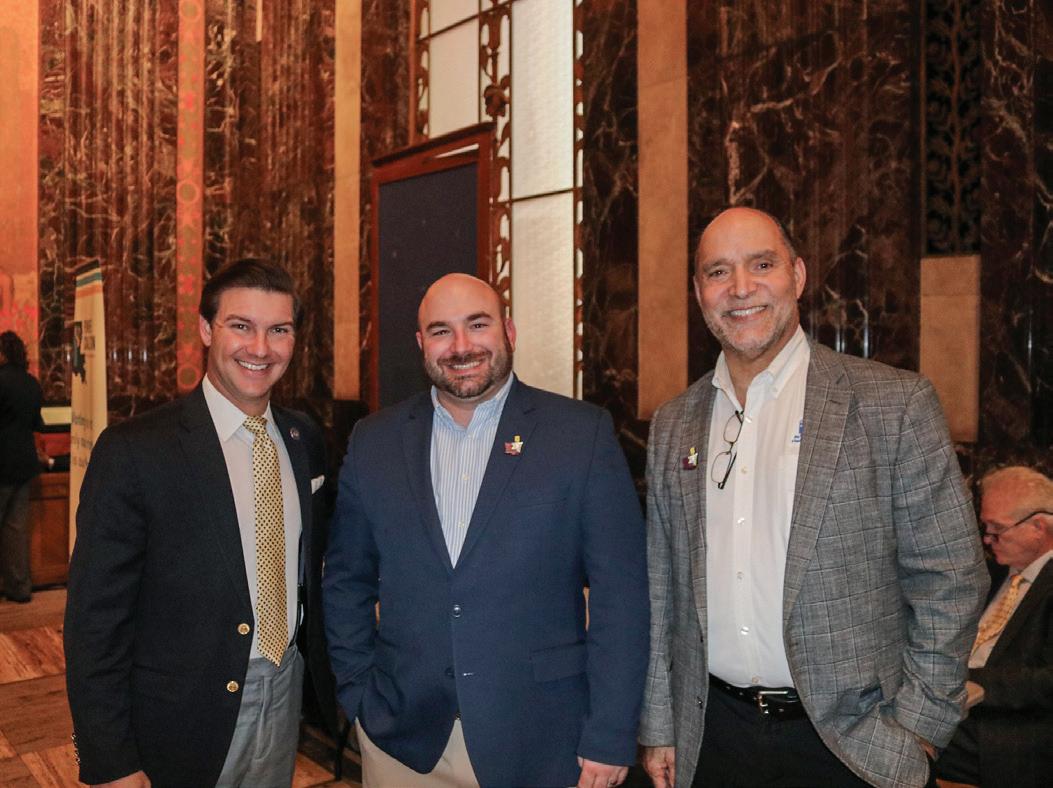
Cooking Up Connections: Annual Taste of Louisiana Legislative Cookout
Jeff Davis Electric participated in the April annual Legislative Cookout and Rally in Baton Rouge. Employees networked with local legislators and provided them with fried shrimp and frog legs.
LEFT: From left, Ben Hetzel, Ron Mitchell, Johnathan Nunez and Kain Miller batter frog legs and shrimp. RIGHT: From left, State Rep. Chance Henry visits with JDEC COO Eric Gautreaux and JDEC CEO Mike Heinen.






























Energy Scams Unmasked
In today’s digital age, utility scams are on the rise, targeting consumers of water, gas and electricity. Scammers are becoming more sophisticated, exploiting technology to deceive people through various means, such as phone calls, texts, emails and deceptive websites.
Here’s what you need to know to protect yourself:
Recent scams include imposters posing as utility representatives, demanding immediate payment to avoid service disconnection. They may also claim you’ve overpaid and offer a refund in exchange for personal information.
Spotting a scam involves watching for high-pressure tactics, unusual payment requests—such as gift cards or cryptocurrency—and signs of poor communication quality, such
as misspellings and incorrect grammar.
Do not make instant payments or share personal information over the phone or via email. Your co-op provides secure payment options and never demands immediate payment or requests sensitive details via these channels.
If you’re unsure about a communication claiming to be from your co-op, hang up and call the office directly to verify.
To avoid scams, be cautious of unknown individuals requesting personal information, and report any suspicious activity.
By staying vigilant and communicating with your utility provider, you can help protect yourself and your community from fraud. n
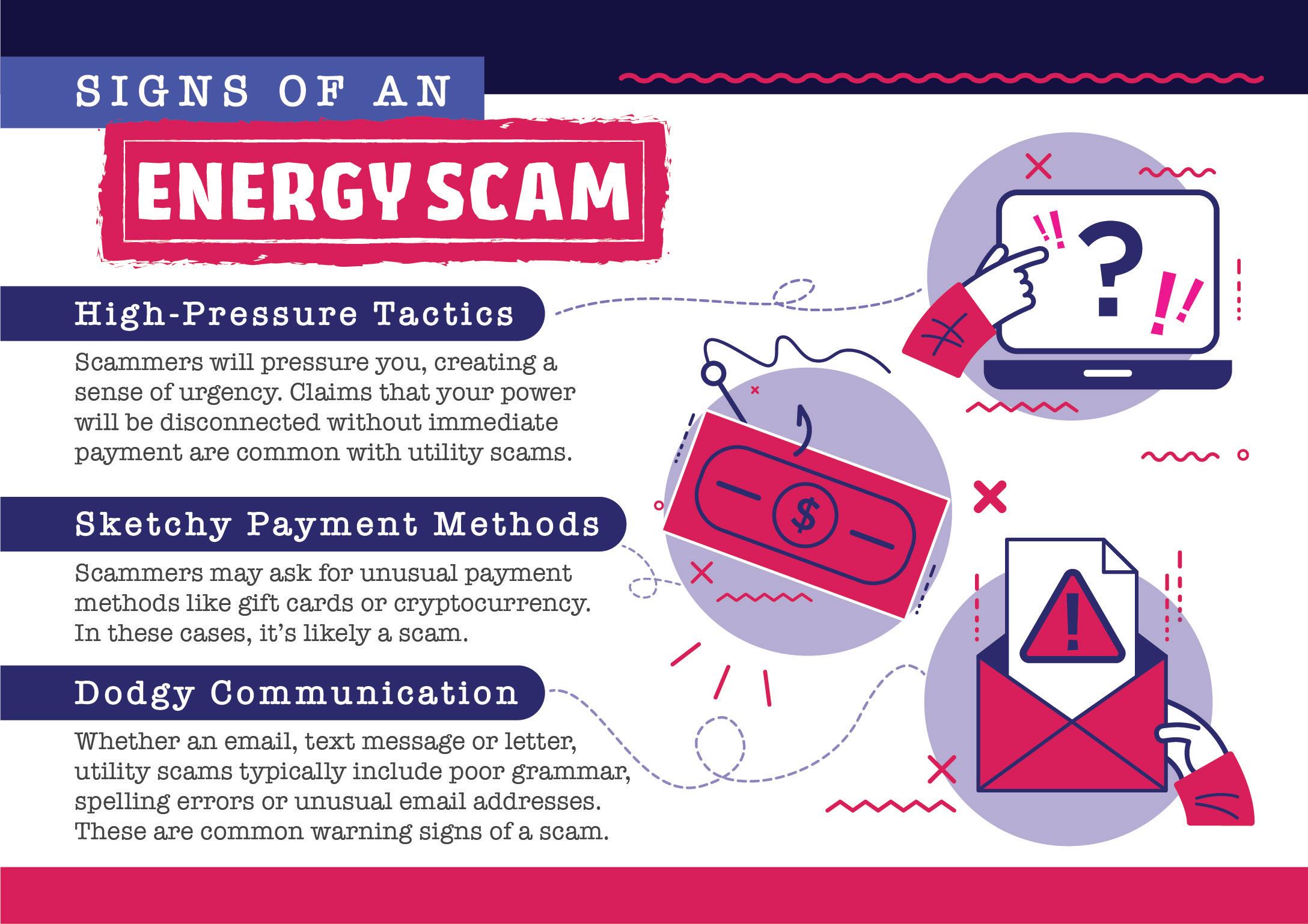
JEFF DAVIS ELECTRIC
Tallgrass Farm: A Passion for
By Conley Bourgeois
While working for the Economic Development Tourism Office in Jeff Davis Parish, Roanoke native Burt Tietje was tasked with creating a crawfish tour within the community. Having a passion for agriculture, he knew this tour was something the community needed. With his 120-year-old family farmland in his backyard, Burt decided to curate the tour himself.
He manages more than 200 acres of crawfish ponds. Emptying and re-baiting roughly 2,000 traps takes about seven hours daily. With 120 days in a season, checking traps becomes instinctual.
“I hope I can do this until I’m 79 ... if I can still get my boots on,” he says.
20
Crawfish, rice cultivation and the pleasures of farm life fill each day. Burt and his wife, Mary, live on the Roanoke farm with three children.
“The crawfish market is one of the last supply-and-demand markets out there,” Burt says while checking his plastic-coated wire traps. “Crawfish farming has exploded since 1970, and Southwest Louisiana wouldn’t be in the grain business without our crawfish revenue.”
In 2000, 2% of the farm income in Jeff Davis Parish was crawfish. Now, in 2024, it is up to 46%.
“We take our crawfish production very seriously now,” he says.
Agritourism is another revenue source for the farm. Hosting more than 2,000 people a year at Tallgrass Farm, Burt knows how to tailor his lessons for every age group. Visitors include local school and church groups, tour busses from all over the United States and even overseas visitors from France, Germany, Canada, Russia and Australia. With an undergraduate degree in education from Baylor, teaching comes naturally to him. By incorporating lessons on the biology of crawfish and its life cycle, its predators and food sources, as well as rice farm rotation, Burt hopes each group leaves with a better understanding of agricultural diversification.
“I have a real idea of what teachers are looking for—lessons they can take back and expand in their classrooms,” he says.


JANUA RY/FEBRUARY 2024




Burt enjoys meeting all the people who come to the farm and sharing the history of Louisiana’s agriculture.
“I love the people and what I learn from them,” Burt says.

The Jeff Davis Parish Tourist Commission promotes and coordinates the tours for Tallgrass Farm. To book a tour with Burt, visit jeffdavis.org/attractions/crawfish-farm-tours.





















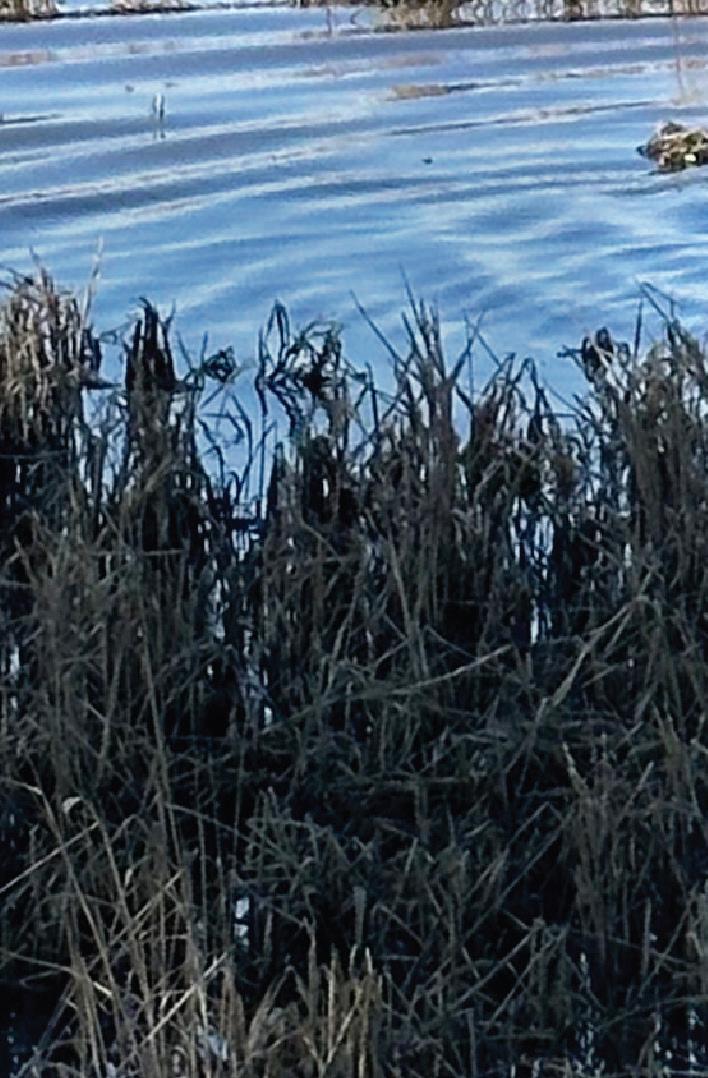


RIGHT: Burt Tietje uses crawfish tours to teach about agriculture and diversification.
FAR RIGHT: Burt says it takes about seven hours each day to empty and re-bait roughly 2,000 crawfish traps.



Agriculture


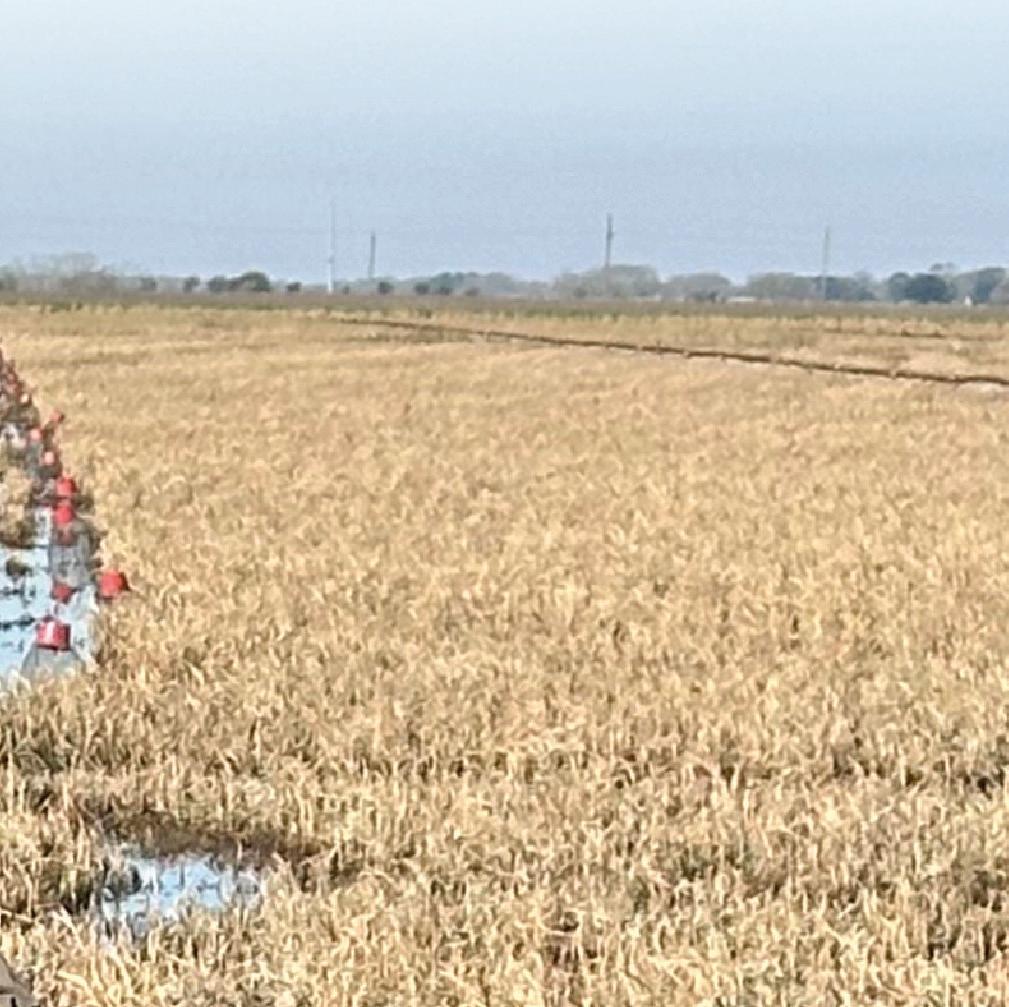




Things You Might Not Know About Power Restoration About Power Restoration 10 10
Have you ever watched a video or TV show where a person is cooking a meal, then suddenly they snap their fingers and the meal is plated and ready to eat? That’s called a jump cut. While everyone wishes we could “jump cut” from a power outage to power restoration, it often takes a lot more effort and people to make it happen.
It’s natural for members to have questions about power outages and why it can take time to get the lights back on. Given our reliance on electricity, there’s simply never a good time to be without it.
Here’s a behind-the-scenes look at the restoration process to help members understand what may be happening when the power is out.
1. 2. 3.
We rely on you to let us know if your power is out. When your power goes out, it might be just at your home or a small section of your neighborhood. There is a chance your cooperative may not know about it, and no one has reported it.
When you’re without power, co-op employees might be, too. Because we are local electric cooperatives owned by the members we serve, employees are local. They are your neighbors, friends and familiar community volunteers. It’s a team effort. Every co-op employee works to get power restored as soon as possible. Member service representatives take your calls, engineers and field staff survey damage, the vegetation management team clears hazards, dispatchers organize crews, and communicators keep everyone informed of progress or potential dangers. When the power goes out, everyone on the team works together as quickly and safely as possible to restore it.
4. 5. 6. 7. 8.
Assess the situation. Every outage is different, and in the very beginning it’s hard to know how dangerous it is or whether equipment might need to be replaced. When responding to outages, the first step is to see what happened, then figure out which materials are needed and then create a plan for how to fix the problem(s) without compromising electric flow for the rest of the members. Restoration is normally prioritized by the largest number of members that can get back on in the shortest amount of time. Crews focus on responding first to public safety issues and critical services such as hospitals. Then work is completed that impacts the largest number of people first.
Co-op employees face many dangers. Besides working around high-voltage electricity, crews are on alert for wild animals, weather elements, falling trees and fast-moving cars. If you ever drive past a utility vehicle, please do so slowly.
Flickering lights are a good thing. Some folks mistake flickering lights for outages, but these “blinks” are important because they indicate the equipment worked and prevented a possible outage likely caused by wayward animals or stray tree limbs on the lines. You need a backup plan. If you depend on electricity for life support purposes, you must have a backup plan. Remember, it’s not always known how long restoration efforts will take.
9.
Employees have to plan and eat. If you ever see co-op trucks in a restaurant parking lot while your power is out, know that sometimes employees huddle in a safe, common area to map out the strategy for getting the power back on. Also, crews work long, hard hours during outages and need to take time for meals, just like everyone else.
10.
Sometimes it’s a waiting game. Each portion of the power grid is connected to other electric utilities, and positive relationships are maintained with power providers interconnected to our system. If an outage is due to an issue from their feed into the system, they must repair it.
Periodic power disruptions are inevitable. If the lights go out, know your co-op team is working as quickly and safely as possible to restore power.
COMMON CAUSES OF POWER OUTAGES COMMON CAUSES OF POWER OUTAGES
There is never a good time for the power to go out, but if it happens on a sunny day, you might be left wondering why. Here are the most common causes of a power outage.
WEATHER WEATHER
High winds, snow and ice can cause tree limbs to fall on power lines. Other weather effects, like wildfires and lightning strikes, can cause major damage to equipment.
CRITTERS CRITTERS
Squirrels, birds, snakes and other animals can inadvertently contact power lines, causing short circuits and disruptions to electrical supply.
Scheduled
Occasionally, we plan outages to perform upgrades or repairs to parts of the local grid. MAINTENANCE
ACCIDENTS ACCIDENTS
Vehicles can crash into utility poles, bringing down power lines. Construction and excavation work can also result in disruptions to underground lines.
